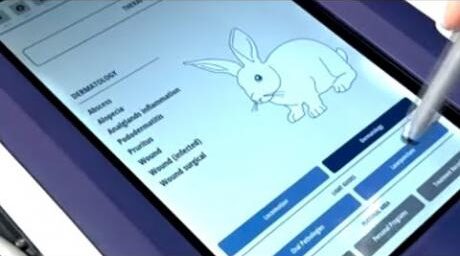Since the beginning of the pandemic, nearly 1 in 5 households have acquired a cat or dog.[i] This increase, combined with operational inefficiencies caused by COVID-19, has stretched veterinary practices thin, leading to a greater reliance on veterinary technicians and assistants. Being able to leverage the skills of veterinary technicians (vet techs) and assistants is key to building and efficient practice.[ii]
Despite calls for a national standardization of the veterinary technician profession, there is no uniform set of standards for vet techs across the United States.[iii] Currently, only 10 states have a clear definition of the “Veterinary Technician” title and the level of training and licensing required for the title.[iv] The lack of clear definition means that someone using the “Veterinary Technician” title in one state may not have passed a licensing exam or received the same level of training as someone using the veterinary technician title the next state over.[v] Standardization across states would create consistency in the level of training required for the profession, ensuring that veterinary technicians are competent in their field.
As of 2019, the American Veterinary Medical Association (AVMA) estimated that approximately 79,000 out of 118,000 vet techs were not credentialed.[vi]
Generally, vet techs obtain either an associate’s or bachelor’s degree in veterinary technology. Veterinary technology programs often include training in medical dosage calculations, pharmacology, anesthesia, laboratory skills and a variety of other topics.[vii] Credentialed vet techs must also pass an exam to earn their license and continue taking the continuing education courses to ensure their certification remain up to date.[viii]
Vet techs have a wide range of responsibilities that can include drawing blood, taking x-rays, processing samples, administering anesthesia, and performing dental cleanings. They are not permitted to diagnose conditions, perform surgery, or prescribe medications. [ix]
Veterinary assistants are often trained on the job or through a training program. A veterinary assistant program usually includes an internship at an animal care facility, showing that the person is competent in animal health and welfare.[x] Currently there are no credentialing exams for veterinary assistants.[xi]
Veterinary assistants support vet techs and veterinarians in their daily tasks. Vet assistants often assist in clerical duties, kennel work and handling of animals.[xii]
The veterinary technician shortage has been magnified by the COVID-19 pandemic, with increased demand, low pay, and burnout, practices are struggling to retain vet techs.[xiii]
Vet tech positions have a large turnover rate. A recent study showed that 56.7% of vet techs change their place of employment within the first five years in the industry. Additionally, the veterinary technician profession has a turnover rate of 30-35%.[xiv]
Morale is a large issue among a profession that is commonly underutilized, approximately half of vet techs learned skills often go unused.[xv]
Suggested measures to address the shortage include increasing the number of accredited programs, increase pay, and fully utilize the skills of vet techs.[xvi]
Underutilization of veterinary technicians can also lead to operational inefficiencies and contribute to high turnover rates. Leveraging vet techs to their fullest potential can increase jobs satisfaction, while giving time back to veterinarians to perform tasks that require their level of credentials and expertise.[xvii] Keeping track of what a veterinarian typically does each day and investigating if those tasks could be delegated to a vet tech can help shed light on how to better utilize veterinary technicians’ skills.[xviii]
There are various ways to utilize vet techs to their full potential, one way is to play to their strengths. Some vet techs may like more client interaction while others prefer doing lab work, helping identify these strengths can lead to better utilization.[xix] Providing opportunities for additional training can lead to specialized skills such as dentistry or behavior, these skills can then be applied within the practice setting.[xx]
As the number of people who own pets continues to grow, the need for vet techs is growing as well. As of 2021 there were 122,800 vet techs employed in the United States. The Bureau of Labor Statistics projects that vet tech jobs will grow by 20% between 2021-2031 leading to a projected employment of 146,900 vet techs by 2031.[xxi]
Veterinary assistants are more common in the industry, with only 61% of practices having credentialed veterinary technicians on staff, but 88% of practices having veterinary assistants and non-credentialed individuals on staff.[xxii]
Vet techs and assistants can do a wide range of tasks to ensure a practice runs smoothly. These tasks assist in taking some responsibility of the veterinarian and maximize the time of all staff involved. With a large increase in U.S. pet ownership, it is even more crucial to have vet techs and assistants on staff and utilize them as much as possible to ensure efficiency and care.



